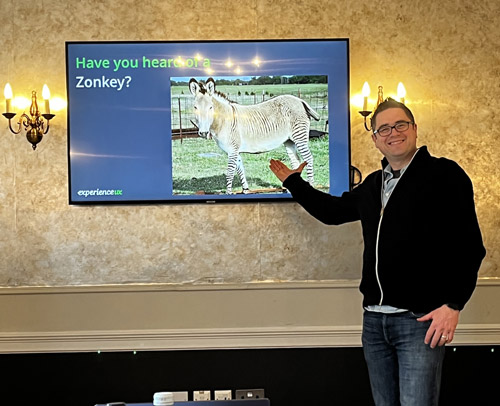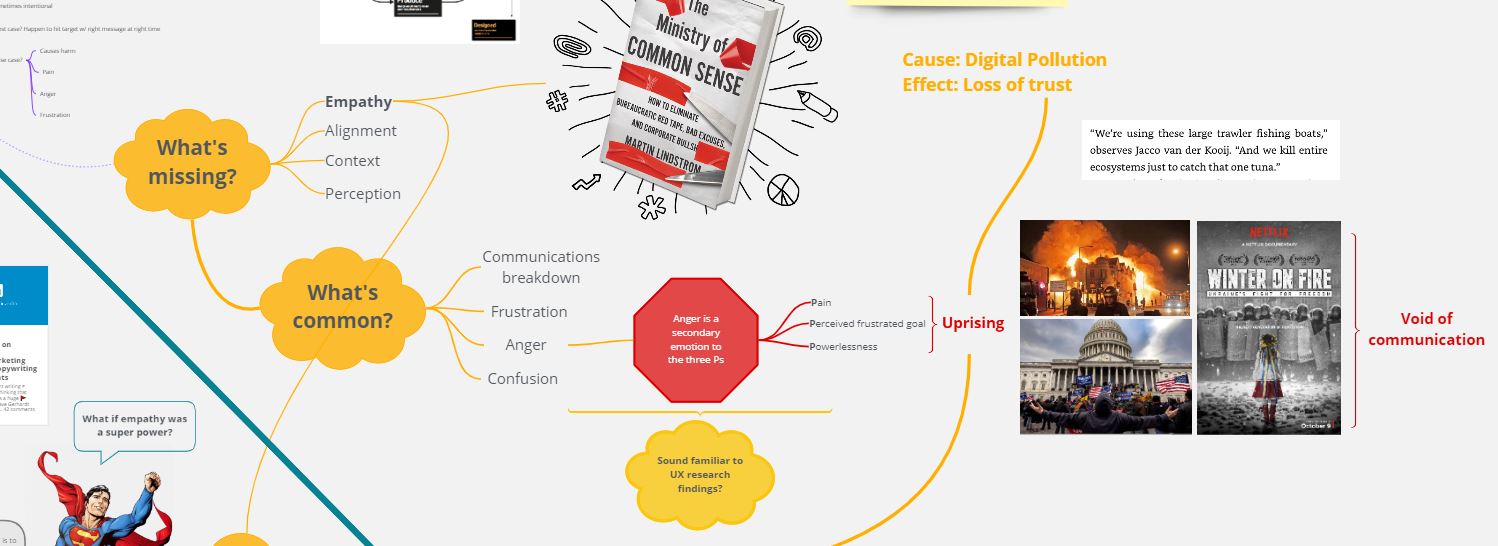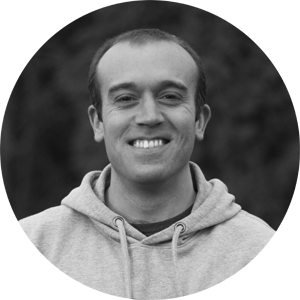We’ve always loved our twice-yearly Experience UX Away Days: A chance to take some time away from the norm of delivering projects and spend some time together as a team. The last couple of years has had quite an impact on our ability to run these Away Days as regularly as we might have in the past, which made this chance to pause and reflect even more poignant. We shared ideas, thoughts, lots of food and one new and very unexpected discovery…

(You’d have to ask Ali about how he discovered the Zonkey!)
We kicked off the day with an update from our Managing Director, Ali. As well as updating us on where the business is at, Ali spoke about the experience of taking sole reigns of the business during such an unpredictable time. One of his focuses is to refine the purpose and vision of Experience UX. He spoke candidly about what it’s like to try to make sense of your thoughts and get things out of your
head into the semblance of a statement or two, encapsulated perfectly by this wonderful quote from Maya Angelou:
There is no greater agony than bearing an untold story inside you.
Maya Angelou
What’s changed?
Next up was me, reflecting on the changes I’ve noticed in the way we work and how this might have changed since we switched to fully remote working back in 2020. Being out of the business for all of 2021 gave me a different perspective, after having time and space away, finding it easier to spot the times where our processes don’t necessarily help us to work smarter.
The team did a fantastic job of reacting to such a drastic change to the way we work and adapted to 100% remote research with such poise. Their ‘productivity’ and work rate had shifted and meant there was actually a risk of being too productive – yes you read that right, a team can be too productive. The work we do requires a lot of interpretation and analysis and to do this well requires time and headspace, something that can take a knock when you’re switching between different projects and topics.
We spoke at length about the impact this kind of context switching can have on concentration and focus and will be making changes to the way we schedule work to ensure the team can protect that all-important headspace. We spoke about how much time we used to spend travelling to and from client meetings, and how valuable this ‘dead time’ was; when you couldn’t respond to emails or work on project deliverables.
We vowed to carve out buffer time on either side of meetings to reduce the back-to-back nature of remote meetings; spend some more time offline, and create a more breathing space.
I also proposed an evolution of how we note take and analyse User Research. We discussed how tools like Miro are useful for efficiently collecting mass data, but also reminisced about finishing up a day of face-to-face research with a whole bundle of post-it notes.
There’s something helpful about the physical constraints of a post-it note written in a usability lab (remember what they look like?! I’d almost forgotten!) you are limited by handwriting, speed of writing and ability to remember important ‘in the moment’ information, with no feature to pause and rewind a session. This style of notes certainly helps that transition into affinity diagramming and analysis, after research, by focussing on the most critical findings and reducing duplicated notes.
We enjoyed exploring this with the team to consider how we can make the most of online tools while bringing back some of those face-to-face and all-important research elements.
How could user-centred communications change experience?
After some Elevenses and another round of coffee, Matt was up next posing an interesting question to us; how could user-centred communications change experience?
Beginning by reviewing horrendous PR disasters, he spoke about the different ends of communication extremes; chronic over-communication and complete lack of communication; the impacts that these have on the end-user and their emotions, and their trust and engagement with an organisation – be it an online retailer, or a comedian-turned political leader. A fascinating and thought-provoking adventure in the world of communications.

Creativity Blockers
Next up was Emma, sharing her learnings from a recent read – Thinkertoys: A Handbook of Creative Thinking Techniques. She started by helping us identify what gets in the way of getting creative – FUDS, our Fears, Uncertainties, and Doubts, and ideas of how to overcome them. She told us about the two different types of thinking that are necessary for creativity; linear thinking and intuitive thinking and we did some fun activities to try these out for ourselves. One activity titled ‘Stone Soup’ was based on a fable and involved us asking the questions ‘What if…’ or ‘Just suppose..’.
Stone soup: An old Eastern European children’s fable where an old beggar was able to create the illusion of a wonderful soup made using a stone in return for a hearty meal.
The simplest of activities can reduce the barriers to getting creative and unlock the most interesting ideas.
We rounded off the day with a discussion about the future of Experience UX; the types of products and services we feel most passionately about, and a much-deserved beverage at the bar. What a wonderful day of chat, food, and inspiration, I’m looking forward to the next one!

